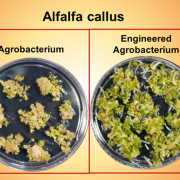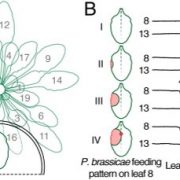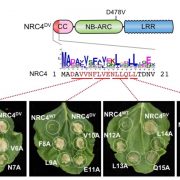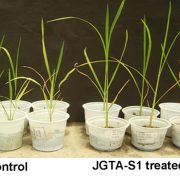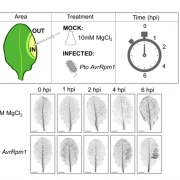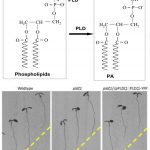A single amino-acid substitution impairs PTI and ETI in an SA-dependent manner in rice ($) (Plant Physiol)
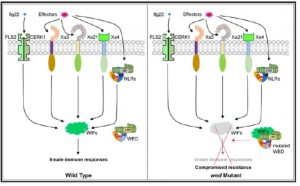 Plants possess two immune strategies to prevent invasion by pathogens called pattern-triggered immunity (PTI, typically mediated by cell-surface receptors) and effector-triggered immunity (ETI). During ETI, intracellular resistance (R) proteins perceive specific pathogen effectors. Tang et al. describe a gain-of-function rice R gene mutant designated as weaker defense (wed), in which disease resistance conferred by both PTI and ETI against Xanthomonas oryzae pv. oryzae (Xoo) is suppressed. These results implied in rice there is an overlap in defense signaling conferred by multiple R genes, and a shared pathway between PTI and ETI. Interestingly, the wed mutants have elevated salicylic acid levels, although defense responses and expression of NPR1 are decreased, suggesting that its effects are SA-independent. In summary, this gain-of-function mutant could be a powerful tool for genetic dissection of shared immune signaling pathways activated by different types of immune receptors. (Summary by Nanxun Qin) Plant Physiology 10.1104/pp.19.00686
Plants possess two immune strategies to prevent invasion by pathogens called pattern-triggered immunity (PTI, typically mediated by cell-surface receptors) and effector-triggered immunity (ETI). During ETI, intracellular resistance (R) proteins perceive specific pathogen effectors. Tang et al. describe a gain-of-function rice R gene mutant designated as weaker defense (wed), in which disease resistance conferred by both PTI and ETI against Xanthomonas oryzae pv. oryzae (Xoo) is suppressed. These results implied in rice there is an overlap in defense signaling conferred by multiple R genes, and a shared pathway between PTI and ETI. Interestingly, the wed mutants have elevated salicylic acid levels, although defense responses and expression of NPR1 are decreased, suggesting that its effects are SA-independent. In summary, this gain-of-function mutant could be a powerful tool for genetic dissection of shared immune signaling pathways activated by different types of immune receptors. (Summary by Nanxun Qin) Plant Physiology 10.1104/pp.19.00686


